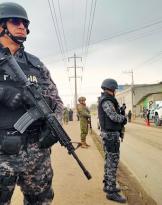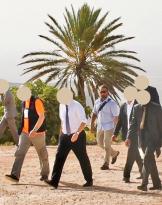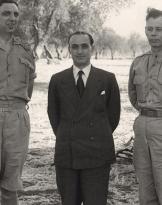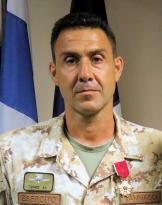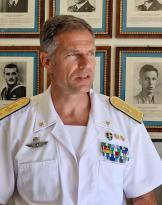After closing our first leg of the "journey" in the Army Aviation, the second, and last, coincides with an interview with the commander of the AVES, Brigadier General Paolo Riccò. With the general we talk about his experience as a pilot and his present at the helm of AVES without, however, disdain a look at the future challenges facing the Army Aviation.
His story in AVES is, in some ways, a recent story, given that Riccò has a past in the infantry, before, and in the paratroopers, then. A past that saw him also employed in the battle of Checkpoint "Pasta", during the mission in Somalia, where he received the bronze medal for military valor. This important honor was not the only one, given that in the personal medal collection it can show gold and bronze crosses for the Army's merit. But over the honors, General Riccò, has a great command experience, which saw him pass by the command of the 5 ° AVES regiment "Rigel" in command of theaviation battalion of Herat, Afghanistan - in the ISAF Operation - up to the command of the aircraft brigade "Friuli". Fundamental experiences to operate at best as commander of the Army Aviation, assignment given him the 24 March 2017.
General Riccò, joined the Army Aviation in 1995 assigned to the 49th Casarsa Helicopter Squadron Attack Group. What does it mean for you to command AVES today?
At that time I never thought I could have the honor of commanding the Army Aviation. In my professional career I was lucky enough to cross all the order levels of this beautiful specialty and to be able to build up the skills and knowledge necessary and important and necessary for when taking on these tasks. In particular, in the first assignment within the AVES, in Casarsa, I had the opportunity to immediately enter the dynamics of the helicopter A-129, then recently acquired (photo), which allowed me to verify all the problems that involve the entry into service of a new machine, as well as its evolution over time. Today the 129 is a highly performing and competitive machine, probably superior to the Franco-German "Tiger" and not comparable to the American "Apache" because they belong to two different categories, "light" the first, "medium-heavy" the second. The experience in the "Rigel" regiment of Casarsa allowed me not only to know the A-129 helicopter but also the AB205 helicopter and therefore to have a double vision of use that surely served me over time.
From its foundation the Army Aviation she has always been busy both in the national field and in the international field. How important is it to always have full operational capacity?
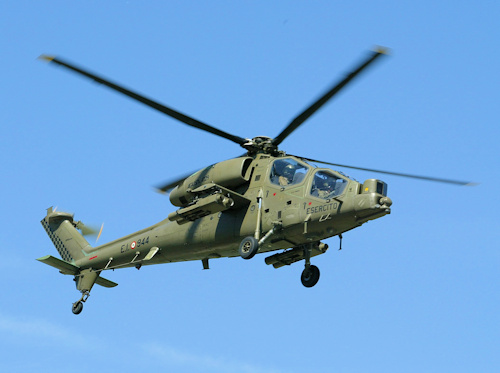
It is very important because the Army Aviation must always adhere to the needs of the Forces in the field. For example, since 1979, AVES has been employed in Lebanon in the UNIFIL mission; a mission at the time "demanding" both for the performance of the machine and for the use outside the national borders in a period when the Army still had little experience in deploying contingents abroad. "Italair", the Italian helicopter Task Force on an AVES basis, is still operating at the service of the entire UNIFIL mission, maintaining, for almost 40 years, the same characteristics of impartiality and professionalism mainly with MEDEVAC tasks (medical evacuation). Subsequently, starting from the use in Somalia in the 1992, the operational experience revealed the need for helicopter support, not only for transport but also for combat. In fact, the events of the Checkpoint "Pasta" have highlighted the fundamental importance for the ground troops of the coverage provided from above, especially in urbanized scenarios such as those of the Somali capital, Mogadishu. The use in the same theater has also suggested one of the evolutionary lines of the attack helicopter, that is the primary need to equip itself with a 20mm gun that combines the fire power with precision, allowing to intervene minimizing collateral damage. Later, the most recent use of the 129 in other Theaters such as Afghanistan and Iraq led the development of the Exploration and Escort Helicopter to changes in avionics rather than armament, the latter only improving recent with the replacement of the "TOW" missile system with the "SPIKE", which guaranteed greater precision in favor of the fire support.
In the present, we can state that Army Aviation has become a fundamental piece of Defense, whether it is deployed in national terrestrial devices or acting independently as the "Griffon" Task Force in Erbil, Iraq, coalition architecture with Personnel Recovery tasks, or recovery of personnel who remain isolated during operations.
You have always emphasized the importance of 24 / 7 operational capability. How important is the contribution of each specialist to guarantee it?
The 24 / 7 operating capacity is always guaranteed above all thanks to what we call "Human Factor". Beyond the use of highly technological aircraft and materials, the real fulcrum and foundation of this capacity is the professionalism and spirit of service that our men and women in uniform guarantee every day. We, "blue berets", guarantee the 24 / 7 both in Homeland as National Emergency Service, and abroad in the various Theaters operating for Medevac and Personnel Recovery missions. All this requires an enormous effort from a technical point of view. In fact, erroneously, we tend to consider only the crew as important, underestimating the essential work done by the ground support staff, such as the fire fighting, the carburantist, the mechanical technician, the electronic technician. Instead it is only thanks to the teamwork that we can guarantee the 24 / 7.
What will the future development of the means be? Both the new Exploration and Escort Helicopter (which will replace the A-129, ed) and a new helicopter utility?
It is very probable that the 129 has reached today (photo) its maximum expression in capacitive terms, since there is, for example, more space available in the cockpit for new avionics apparatuses that allow to effectively exchange information with all that today moves and operates in the Third Dimension: Acquisitors, Unmanned Aerial Vehicle, etc. Moreover, obsolescence begins to take over, meaning as such all those components that can no longer be substituted because they are no longer produced. In designing the new helicopter for exploration and escort, there was a need for a machine as well as a more performing performance even more from the point of view of flight and that of operational use, which allows, that is, greater integration with the systems deployed on the battlefield or in the Operational Theater, through the exchange of information for a rapid and effective intervention in favor of those who maneuver from the ground. Today, for example, the available systems are considered outdated because you are still forced to connect to the ground to receive data that new technologies allow you to receive in another way. As for the so-called "legacy" fleets, that is inherited from past acquisitions, they are considerably less performance than new ones and they are therefore being replaced because it is more advantageous, as it costs more to buy and replace old materials rather than buy a New car.
Cuts in public spending and, consequently, in military spending can be a limitation for the modernization of the fleet?
Army Aviation but in general the entire Armed Forces and Defense are involved in the process of rationalization and revision of the military instrument. Ours is "only" a Specialty within an Armed Force that moves and operates primarily by land. To do this, however, one can not ignore the exploitation of the Third Dimension that allows greater flexibility, mobility and security of operations. We too, however, suffer the consequences of cuts in public spending that result in less availability of flight hours. Not being able to affect fuel and maintenance, we had to prepare the training and the preparation of staff by dedicating the hours of flight available to the crews planned for the upcoming employment in the Operational Theater. The advanced technology, integrated into present and future Air Force Army fleets, has allowed a reduction in flight lines and aircraft numbers, also with a view to containing maintenance costs, in any case pursuing the objectives set, according to the institutional mission assigned.
Would not it be more logical to design a remote piloted helicopter in order to better support the troops on the ground and avoid human losses?
The remote piloting definitely guarantees not to risk the loss of the crew. Based on my personal experience as a manager of operations in Afghanistan, where I have had the opportunity to use them, I can say that the scenario visible from an aircraft is much more complete than the view offered by a camera integrated into a remote piloting system. In fact, in the second case it is as if projecting a cone from top to bottom, having only the images contained in the base of the cone available: it is not therefore a real scenario but of circumscribed images. The UAVs, rather, after having identified a threat to be able to intervene in that cone, but not having the opportunity to know what happens outside the field of vision of the room. From the helicopter, on the other hand, the pilot has an area view that allows him to tailor his decision-making process to the information received at 360 °, thus avoiding the possibility of collateral damage. The principle of use of each fleet of aircraft is that each machine must be used according to the designated task, according to capabilities and vulnerabilities, a principle for which in the Third Dimension the Armed Forces have a well-structured dock of aircraft to meet the different needs both operational and supportive to the population, according to the "Dual Use" principle.
(photo: AVES - Gen. Riccò and to follow the "Mangusta" first and last version)
Also read: "History of the Youngest Specialty of the Army"



